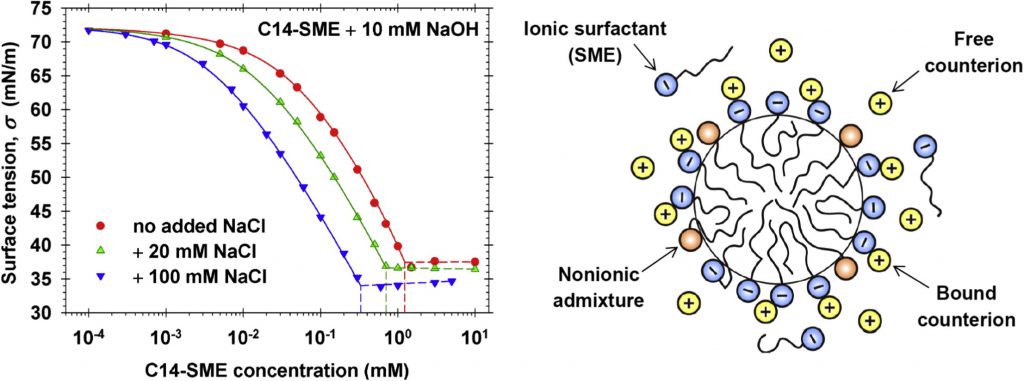Sulfonated methyl esters of fatty acids in aqueous solutions: Interfacial and micellar properties

The interest to sulfonated methyl esters of fatty acids (SME) has been growing during the last decade, because these surfactants are considered as an environmentally friendly and renewable alternative of the linear alkyl-benzene sulfonates (LAS). Here, we present a quantitative study on the properties of aqueous SME solutions, and especially on their surface tension isotherms, critical micelle concentration (CMC) and its dependence on the concentration of added NaCl. It is demonstrated that the CMC of an ionic surfactant determined by electrical conductivity is insensitive to the presence of a small nonionic admixture, so that the CMC values determined by conductivity represent the CMC of the pure surfactant. Using SME as an example, we have demonstrated the application of a new and powerful method for determining the physicochemical parameters of the pure ionic surfactant by theoretical data analysis (“computer purification”) if the used surfactant sample contains nonionic admixtures, which are present as a rule. This method involves fits of the experimental data for surface tension and conductivity by a physicochemical model based on a system of mass-balance, chemical-equilibrium and electric-double-layer equations, which allows us to determine the adsorption and micellization parameters of C12-, C14-, C16- and C18-SME, as well the fraction of nonionic admixtures (if any). Having determined these parameters, we can further predict the interfacial and micellization properties of the surfactant solutions, such as surface tension, adsorption, degree of counterion binding, and surface electric potential at every surfactant, salt and co-surfactant concentrations.

